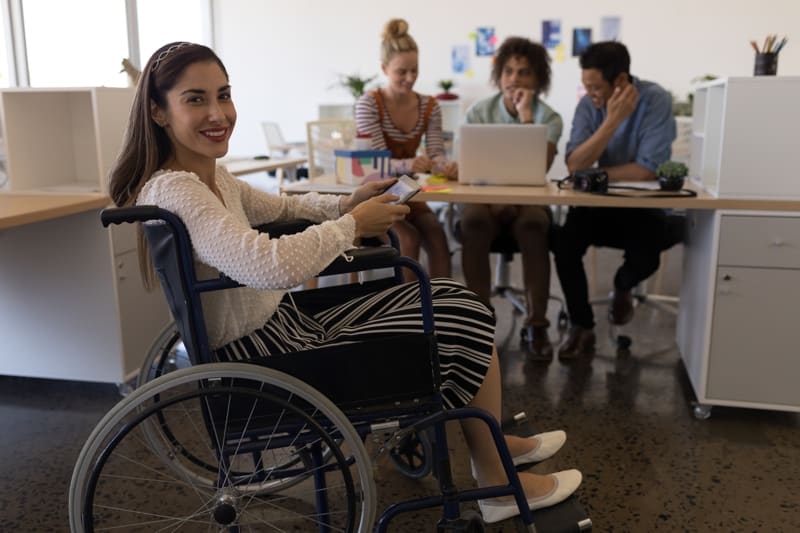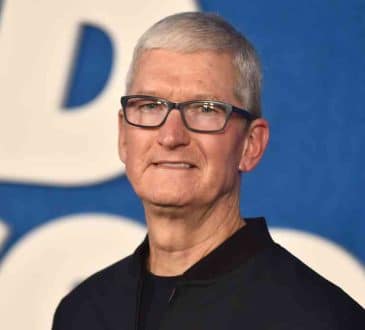Is Your Business Organizationally Ready to Hire People with Disabilities?

People with disabilities are the largest minority in the world yet in the U.S., these individuals are twice as likely as their non-disabled peers to be unemployed, often referred to as being underemployed. I see it as being underestimated. Executives are typically not thinking about people with disabilities as college educated, skilled, high-potential leaders who have unique, innovative ideas ; rather if they do think of this segment in an employment context, it’s about compliance-related issues and requirements and/or bias (conscious and unconscious), due to fear of the unknown. And for those executives who do have an interest in employing this segment of the population, what often stops them from doing so is not knowing how to go about sourcing, recruiting, hiring, employing and retaining this segment in a manner that will ensure success for both the individual and the company.
This makes sense because when it comes to disability inclusion, it’s not only important to know what steps to take and the manner in which to take them, it’s critical to understand the order in which the work should be done. It’s about organizational readiness. For instance, executing a robust talent acquisition strategy for people with disabilities before ensuring the company’s Career Portal is accessible, is probably not the best decision if the portal is the first or primary entry point for candidates to engage. This does not mean that every aspect of organizational readiness must be complete before hiring can take place, it just means that an enterprise-wide strategy should be developed that includes commitments from the highest levels of the organization for budget, accountability timeline, success factors, etc.
Five Best Practices for Organizational Readiness
First, in order to determine exactly what path a company needs to take to be successful in this work, the executive team should engage in the global best practice of an Organizational Assessment & Gap Analysis where stakeholders, leaders from every functional area of the company, come together for a day to assess individual and organizational experiences, policies, processes, consistency of communications, knowledge, interests and fear relative to this segment of the population. Taking these findings into account along with employee interviews, corporate culture and other diversity-related policies and practices and comparing the findings against global best practices, guidance regarding opportunities as well as risk mitigation will emerge. This guidance will help to form a strategic blueprint for moving from current to desired future state.
The second best practice for strategically assessing the organization for organizational readiness is a Digital Usability and/or Accessibility Assessment. The Digital Assessment is to ensure candidates, employees, even customers who are blind, have a visual impairment, can’t use a mouse and/or a keyboard or have navigational issues, are able to access a company’s public site, inclusive of its Careers Portal as well as its intranet site. Although many are familiar with a Digital Accessibility Audit, most are not as familiar with a Usability Assessment which is much more practical and cost effective. Usability revolves around having people with different disabilities performing tasks on the site while sharing their experiences. When a CDO, CHRO or any executive is handed an Accessibility Report, unless they have a technology background, they will not truly understand the issues at hand. With Usability, not only do they receive a very practical findings/recommendations report, they receive a video of the individual exchanges (unless they have live-streamed the exchanges).
This method of delivery requires no technical knowledge to understand what the issues are, where they exist and most importantly, the impact of not fixing them. Not only is digital accessibility and usability important from the standpoint of talent acquisition and management, there’s global legislation requiring it.
The third best practice is a Physical Barrier/Universal Design Assessment. In the U.S. the Americans with Disabilities Act (ADA) has requirements around accessibility, but today’s best practice is to go beyond those requirements to meet the global guidelines of Universal Design which employs seven principles. It’s not just about improving access for individuals with physical disabilities, it’s about universal access for everyone.
A fourth critical component of organizational readiness is to develop a Reasonable Accommodations Process (RAP) that is fair, equitable and consistent across the footprint of the enterprise. A RAP is a well thought out, documented process that is utilized in the same manner no matter who is making the request, what position they have in the company, what department they work in, their location, disability type, etc. Similar to the issues of Digital and Universal Accessibility, from a corporate standpoint, a Reasonable Accommodations Process is at its core, an issue of risk mitigation.
A fifth best practice is training. No organization should consider itself disability ready without the inclusion of training. Although there are many training programs to consider, Learning and Development programs that immerse Human Resources, Employee Relations and especially Talent Acquisition professionals and People Managers, in the appropriate ways to conduct an interview, know what can and cannot be asked, what information can be shared relative to someone’s disability and how to respond to a request for an accommodation, should be delivered before any formal talent acquisition strategy begins.
Similarly, another training program that is not only a global best practice, but often the very first practice, is the delivery of Disability Etiquette and Awareness (DEA). While Immersion-type training focuses heavily on compliance -related issues and actions, DEA focuses on the very practical aspects of engaging, communicating and working side-by-side someone with a disability in a manner that both parties are comfortable with. For instance, when meeting someone for the first time, knowing what to do when you reach out to shake their hand and they have a hook or prosthetic device in place of a hand. If managers are not comfortable with basic etiquette, no matter how robust a talent acquisition program a company puts in place, it will not yield the results it’s seeking.
Best Practices for Disability Inclusion
Beyond best practices for purposes of organizational readiness, there are many best practices for generally mainstreaming people with disabilities in the workforce and workplace, otherwise known as disability inclusion, a strand of Diversity & Inclusion. To me, diversity is akin to inviting folks from all walks of life to a party while inclusion is asking those individuals to dance. So professionally dance with candidates and employees with disabilities by employing the following best practices:
- Develop Initiatives to support Self-ID (for those companies that are U.S. Federal Contractors) of individuals with disabilities with enterprise-wide communication campaigns
- Encourage Disability Disclosure by utilizing a Disability Disclosure Guidance Tool or video-vignettes to share information in a non-threatening, relatable way
- Develop initiatives that support the intersectionality of people with disabilities, LGBTQ and Veterans
- Form a Disability Business Resources Group that aligns with business goals and objectives
- Produce Disability Mentor Days and engage in College DSO Liaison programs to build talent pipelines of college students with disabilities
- Develop Disability Mentor Programs for purposes of Career development of existing employees with disabilities.
- Celebrate events such as Disability Employment Awareness Month (Oct), The International Day of Persons with Disabilities (December 3rd), Mental Health Awareness Month (May), etc.
- Participate in Corporate Disability Conferences such as The Disability Matters Conference & Awards Gala, held annually in North America, Europe and Asia
Finally, no matter what a company does in terms of its organizational readiness and execution of best practices, it’s what comes from the top that will ensure this work is successful and sustainable. It’s not only the tone from the top, but the words and actions that the CEO and his or her C-Suite employ that will have the most impact. Beyond acting as role models, top leaders have the power to make disability inclusion an enterprise-wide priority by holding everyone in the organization accountable for its success. As many have said, “culture eats strategy for lunch.” Disability is no different. The culture must be one of acceptance that will allow for a comprehensive strategy to be put in place and executed in a timely manner. The strategy will enable competence building and readiness which will lead to confidence and, ultimately, success for everyone.
Written by: Nadine O. Vogel is the CEO of Springboard Consulting LLC.
Have you read?
# Best Hotel Credit Cards Of 2019.
# Best Business Travel Agencies In The United States.
# Top 100 Best Executive Search Firms And Consultants That Dominate The Recruiting Business.
# The World’s Best Airlines For Business Travel In 2017.
# Best Websites For CEOs, Senior Executives, And entrepreneurs.
Add CEOWORLD magazine to your Google News feed.
Follow CEOWORLD magazine headlines on: Google News, LinkedIn, Twitter, and Facebook.
This report/news/ranking/statistics has been prepared only for general guidance on matters of interest and does not constitute professional advice. You should not act upon the information contained in this publication without obtaining specific professional advice. No representation or warranty (express or implied) is given as to the accuracy or completeness of the information contained in this publication, and, to the extent permitted by law, CEOWORLD magazine does not accept or assume any liability, responsibility or duty of care for any consequences of you or anyone else acting, or refraining to act, in reliance on the information contained in this publication or for any decision based on it.
Copyright 2024 The CEOWORLD magazine. All rights reserved. This material (and any extract from it) must not be copied, redistributed or placed on any website, without CEOWORLD magazine' prior written consent. For media queries, please contact: info@ceoworld.biz
SUBSCRIBE NEWSLETTER








